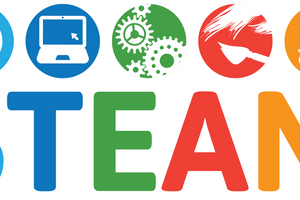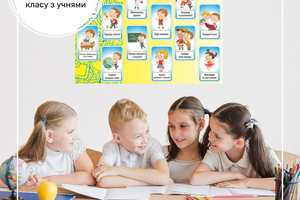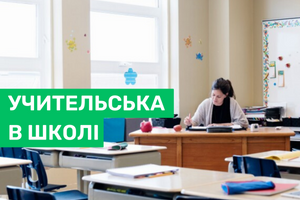In our life we always fall into crises. For some, even a job change means stress, others have to overcome serious illness or loss or have a traumatic experience in the form of stormy experiences.
Not every child grows up happy and strong. However, this does not mean that if she is resilient enough, she will carry these flaws with her for the rest of her life. Also, you can actually train endurance, which is really good news.
In this article, you will learn what factors contribute to resilience and how you can actively work with your children to develop greater mental resilience to give them good tools for life.
Content
1. What does sustainability mean?
1.1. Why is sustainability desirable?
1.2. 7 pillars of stability
2. Exercises to strengthen stability
2.1. Increasing self-confidence
2.2. Strengthen communication skills
2.3. Strengthen emotional stability
2.4. Optimism training
2.5. Improvement of action control
2.6. The practice of realism
2.7. Contribute to analytical power
What does sustainability mean?
In psychology, resilience describes the mental resilience to crises or traumatic experiences. The term comes from physics and describes the property of substances to return to their original form after loading. Therefore, rubber is very elastic, iron is less elastic.
In the 1950s, an American psychologist conducted a longitudinal study of nearly 700 Hawaiian children and noticed that for a third of the participants, a childhood with little money or love did not necessarily mean that they were unsuccessful or unhappy later in life.
Sustainability research is still in progress. Scientists now agree that genes also play an important role, but almost all people have a crucial variant of a gene that affects the balance of serotonin and norepinephrine. Only 0.5% of the population has a more unfavorable gene variation.
Brain cell growth also plays a role: more nerve growth apparently means more flexibility in thinking, which is an important prerequisite for high levels of resilience. As in many things in life, practice plays a role here: someone who avoids or represses conflicts is not training his resilience. Instead, you should try to get better and better at solving problems over time using certain strategies.
Why is sustainability desirable?
A high level of resilience has many advantages, because life has enough crises and problems: separation from a partner, longing for love, arguments among friends, bullying or stress at work/school, illness, death, dismissal.
Even in childhood, a person already faces difficulties: a change of school, divorce of parents, an unloving parental home or poverty, the death of a beloved pet is a difficult test for many children and young people.
The sooner we learn to deal with such crises, the easier it will be for us to get back on our feet. Of course, each person reacts to crises in his own way.
Nevertheless, it is important how a person reacts to difficult situations and circumstances. Surrendering, ignoring, hiding does not solve the problem; realistic appraisal, optimism, and healthy self-esteem, on the other hand, are more likely. Those who manage stress better are happier, healthier and less likely to burn out.
7 pillars of stability
If you search the internet for the factors that make up sustainability, you will always come across the same terms and their synonyms. Accordingly, the seven pillars of resilience are self-confidence, sociability, emotional stability, optimism, action control, realism and analytical power.
Everyone can decide for themselves how much other factors, such as impulse control or empathy, contribute to resilience – maybe sometimes it's healthier to say no and not have understanding for everything and everyone. It will be seen later that terms have several aspects.
consciousness
Being confident that you can control your own destiny is important, but not only that. Self-awareness is also critical to resilience: what do I need, what do I want, what can I do? Where are my strengths and what challenges have I successfully faced?
The term "self-care" also pops up in this context from time to time: listening to yourself, doing something good for yourself, and not being too hard on yourself when times are tough, if you're just not doing well and aren't happy, are also part of this And you can turn down a task or challenge if it's too difficult or unrealistic, or if you just don't have the energy right now—this decision also requires self-confidence.
communication
This is not extroversion, but a strong social network: people who believe in you, who listen, advise, help, are just there - both in good times and in bad. Because even outside of a crisis, it is important to have pleasant, fulfilling moments with people you trust, strengthen relationships, and exchange ideas.
emotional stability
This includes not letting every little, unforeseen triviality throw you off track, but rather putting things into perspective rather than panicking: Is it really that bad or embarrassing to oversleep, or can it happen to anyone? What is the importance of a colleague who is constantly teasing for my life - or what importance do I give him if I know about my qualities and can turn to people who know and value me?
Even if some things are really annoying, it's worth changing your perspective: sure, it's terrible to find out in the morning that someone scratched your parked car and just ran away. But at least I have a car that still runs. What percentage of humanity has this luxury?
optimism
Optimism is an exciting and complex topic in general, as this attitude affects many aspects of life. Optimists are usually not only happier, but also healthier, more balanced and live longer.
The belief that things will definitely get better and that good times will follow bad is essential to taking action at all and seeing a purpose in doing your best.
action control
This cue is close to self-efficacy: Do I believe I can control my feelings and circumstances, or do I feel powerless?
If persistent people fail at something, they do it as an exception - it will definitely work next time. Less resilient people, on the other hand, view success as an exception or a fluke and tend to believe in failure - which, of course, they usually do (keyword: self-fulfilling prophecy).
realism
A rational assessment that crises and problems are a part of life is more helpful than believing that the world is conspiring against you: "Why is this happening to me?" or even "It only happens to me!" is neither correct nor effective because such beliefs prevent people from finding solutions. Instead, you risk feeling sorry for yourself, cringing, and giving up without even trying. And you can't overcome a crisis like that.
Of course, there are things you just have to accept and can't undo. But how you deal with it is always up to you.
analytical power
Getting back on your feet helps not only with a realistic assessment of the situation, but also with critical thinking: what options do I have? Which step is the first/most important? Have I already dealt with a similar situation, and how do I perceive its degree afterwards? To what extent can I overcome the crisis on my own, who else can I turn to for help? Is there an opportunity in this (presumed) calamity?
Exercises to strengthen stability
You can specifically reinforce seven factors that significantly influence your students' resilience. Don't take too much at once, but only two areas at first or switch to a different one every month. Most of the exercises below are easy to integrate into everyday school life and will not only make your children stronger, but also keep them entertained.
Some of the exercises overlap thematically, as do the factors that lead to greater psychological resilience. But all of them offer an opportunity to deal with the topic, to know yourself better and to respond more calmly to crises in the long term. Just pick a few approaches and start a conversation with your students.
Increasing self-confidence
Many things help to gain more self-confidence: sports, self-defense, straight posture, compliments, feeling successful and many others.
First of all, it is important to know yourself or to know yourself better. Focus on the positive with your children. Many options can be assumed:
All students write down three things they like about themselves and are good at.
Students get into small groups and collect the things they think are great about each other - and at the end they tell each other about these points.
As a class, collect situations in which your students were proud of themselves. Together you will explore the meaning of the word pride. How do you feel (when) you can be proud of yourself and are there perhaps things your children should be proud of but are not? Of course, a good classroom atmosphere is essential for all these exercises. If individual children don't get along with each other, or even if there is bullying and outsiders, it can quickly backfire.
In this case, you can divide individual tasks into separate work/homework and contemplate them discreetly. If there are children who do not like anything in themselves and are not proud of anything, then, of course, you need further actions in an individual conversation or a separate educational lesson.
Strengthen communication skills
Everyone needs friends and confidants, even if there are people who unfortunately don't have either. Build trust and friendship and discuss with your students:
What makes a good friend? It's also a set of templates for dealing with prejudice: what people may seem "strange" to you and you're afraid of contact, but they disappear into thin air when you get to know them or take a closer look?
Why and in what situations do you especially need friends? How do people feel without friends?
What can you learn from friends and friendship?
How can you make and maintain (new) friendships? And why do you sometimes not do this, although you really want to?
Of course, this is a wide field. Fortunately, there are many wonderful children's books that deal with the topic of friendship and are thought-provoking.
Find out who the children's trustees are. Are there students who can't talk to anyone about their worries and fears? Why so? And how can you change it together? Does your school have a buddy project? And if not, is it worth considering? Although buddies are more common in secondary schools, there is nothing stopping you from letting your students enjoy them, perhaps in a modified version, e.g. strong students support weaker ones in the respective subjects. If you need to, just talk to your colleagues.
Increasing emotional stability
We are all unlucky, and things don't always work out. However, many people, especially children and young people, tend to put too much weight on the negative and lose sight of the positive things, big and small.
happiness diary
Keeping a happiness journal is a great way to focus on the good things and maybe see them for the first time.
For example, start by telling your children what or what you are looking forward to for many days. For example start like this:
“When I wake up in the morning and find that my back doesn't hurt, that's the first thing that's good, because I usually have it a lot. After that, I look forward to my coffee/good breakfast. On the way to school, I am grateful if I study well and hear great music. Of course I'm looking forward to seeing you, but I was already looking forward to it today when a colleague gave me a small gift.''
This way your children will see that even the little things deserve respect - and that even the absence of something bad deserves thanks. Talk about children's perceptions: Are you surprised? Would you appreciate certain things differently or not mention them at all?
The next step is for your students to keep a happiness journal themselves, e.g. every day as homework, every morning in class, looking back on the past day or looking forward to the next. Talk about it regularly and note if anything changes in the perception of your actions. And, of course, there can be bad days, when nothing seems pleasant about them - at least not from the children's point of view.
to relativize
Then, at the latest, it is time to "stop" real everyday life and ask completely different questions:
Is it natural to have a bed, a roof over your head, food and drinking water from the tap? How many homeless people, including children, are there in Ukraine, not to mention other countries?
How many children with disabilities, serious or incurable diseases who cannot independently in
get up and get to school? How natural is the absence of pain, illness, limitations?
Practice optimism
Look for negative beliefs in your children - so do the opposite of self-confidence exercises. Of course, it is necessary that you get to the root of these beliefs and, ultimately, rephrase them so that something good comes out of them.
Quite harmless negative beliefs are, for example, "I can't do math" or "I can't draw." On the other hand, kids are definitely good at other (more important) things, and of course a bad math grade because of test anxiety doesn't mean they'll never understand the subject at all.
Beliefs like "Others think I'm a nerd" can also be easily reframed: maybe others admire a good student and want more help that the older guy doesn't offer because he's afraid of rejection?
The following beliefs cause more anxiety:
I always do everything wrong.
Nobody likes me.
I'm ugly/stupid.
Unfortunately, because there is a risk that at least some students will have negative self-esteem and express such beliefs, a low-key history is recommended here as well. Only then should you discuss these beliefs in plenary or in partnership or group work. Impasses can often be broken and even dissolved in this way. Try to get to the bottom of such statements outside of class.
It also helps to practice positive thinking by imagining positive scenarios: if you firmly believe in this and visualize that you can handle the situation, you will more easily succeed in reality. You can also practice this with your students, e.g. in the form of dream travel.
Improve action control
Here, joint reflection on past events helps: in what situations did the children feel helpless? What unpleasant experiences have you had? In hindsight, can alternatives be identified that would have changed the outcome of a seemingly hopeless situation?
And, of course, also: were there difficult situations or crises that the children successfully overcame? How did you do it? Would they like a different approach or help?
Again, it is not important that the events are biographical. Maybe your students can think of enough situations where they wouldn't feel comfortable or overwhelmed in purely fictional terms. Or you reach into the bookcase and come up with a story on the subject.
It is important to let children know that they always have choices and that there are always solutions. And if you can't do it yourself, then together - in an emergency situation with consultants, social workers.
Practice realism
Here the focus is on the inevitable, the unchanging: exams in class, separation of parents, death of a pet, etc. Find solutions to the following or similar questions together:
What is my real problem? Cool job or fear of it? Divorce or the fear of being an unloving father or not seeing him?
Because those who look for the root cause of fear often understand: I am not so weak anymore. For example, you can do something about exam anxiety. In the latter case, an open conversation with the parents, with or without the support of another person, can help.
What is the best way to do this?
Does writing or talking about problems from the heart help? Do small rituals help me get rid of anxiety before exams?
Are there positive aspects?
Perhaps the father spends more time with his child after the divorce - or it is even a relief that the parents no longer fight every day. My pet was fine with me and now they don't have to continue to suffer from their disease?
Does whining or complaining change the facts or make me feel worse? Being sad and afraid is always allowed, of course.
Contribute to analytical power
Collect unpleasant situations or problems with your children. You might end up with a list like this:
fight with best friend/parents
a visit to the dentist
parental quarrel/divorce
death of a pet/relative
class test/certificates
intimidation/insult/physical abuse
illness/allergy/injury
too little pocket money
too little time from parents
self-doubt
Then think about which problems are worse and which are less serious. What options do children have, what facts do you just need to accept and look to the future? What advantages can arise from problems?
Here you can also work with books or stories that relate to such situations.
When children find answers, they learn that there is no problem without a solution – if you can't see it yourself, someone else can. And of course, it also boosts your self-confidence when you realize that you can solve (others') problems, because many people find this easier than analyzing and solving their own problems.
















































